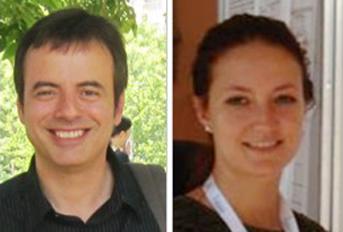Associação Portuguesa de Investigação em Cancro
Glycosylation alterations induce c-Met activation and an invasive phenotype in gastric carcinoma cells
Glycosylation alterations induce c-Met activation and an invasive phenotype in gastric carcinoma cells

Um grupo de investigadores do Instituto de Patologia e Imunologia Molecular da Universidade do Porto (IPATIMUP) caracterizou um mecanismo celular pelo qual uma alteração da glicosilação de proteínas presentes nas células tumorais pode conduzir à ativação de vias de sinalização que promovem a capacidade de invasão destas células.
Autores e afiliações:
Gomes C (1), Osório H (1,2), Pinto MT (1), Campos D (1), Oliveira MJ (2,3), Reis CA (1,2,4).
(1) Institute of Molecular Pathology and Immunology of the University of Porto, IPATIMUP, Porto, Portugal.
(2) Faculty of Medicine, University of Porto, Porto, Portugal
(3) Instituto de Engenharia Biomédica, INEB, University of Porto, Porto, Portugal
(4) Institute of Biomedical Sciences of Abel Salazar, ICBAS, Porto, Portugal
Abstract:
Sialyl-Lewis X (SLex) is a sialylated glycan antigen expressed on the cell surface during malignant cell transformation and is associated with cancer progression and poor prognosis. The increased expression of sialylated glycans is associated with alterations in the expression of sialyltransferases (STs). In this study we determined the capacity of ST3GAL3 and ST3GAL4 sialyltransferases to synthesize the SLex antigen in MKN45 gastric carcinoma cells and evaluated the effect of SLex overexpression in cancer cell behavior both in vitro and in vivo using the chicken chorioallantoic membrane (CAM) model. The activation of tyrosine kinase receptors and their downstream molecular targets was also addressed. Our results showed that the expression of ST3GAL4 in MKN45 gastric cancer cells leads to the synthesis of SLex antigens and to an increased invasive phenotype both in vitro and in the in vivo CAM model. Analysis of phosphorylation of tyrosine kinase receptors showed a specific increase in c-Met activation. The characterization of downstream molecular targets of c-Met activation, involved in the invasive phenotype, revealed increased phosphorylation of FAK and Src proteins and activation of Cdc42, Rac1 and RhoA GTPases. Inhibition of c-Met and Src activation abolished the observed increased cell invasive phenotype. In conclusion, the expression of ST3GAL4 leads to SLex antigen expression in gastric cancer cells which in turn induces an increased invasive phenotype through the activation of c-Met, in association with Src, FAK and Cdc42, Rac1 and RhoA GTPases activation.
Revista:
PLOS ONE
Link:
http://www.plosone.org/article/info%3Adoi%2F10.1371%2Fjournal.pone.0066737






